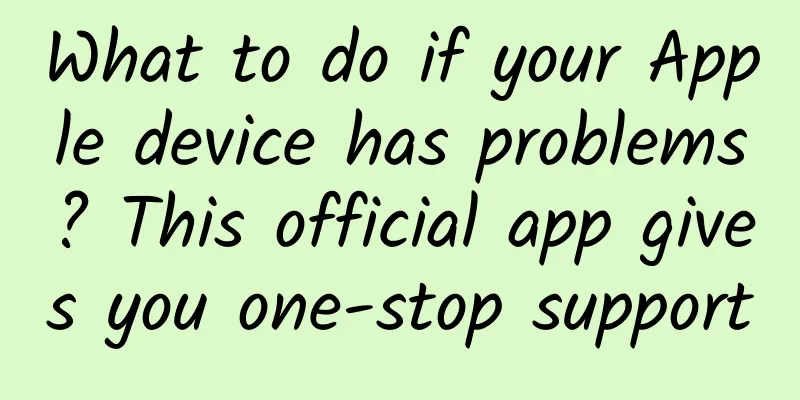What will the VR 2.0 era be like? Five major changes may be coming

|
2016 is already halfway through, and the Oculus Rift, which took four years to develop, is finally available for purchase. From the existing hardware, we can feel Palmer Luckey's sincerity. It is not easy to polish the first generation of products so meticulously. At the same time, VR, a new thing, has also become a hot topic in the technology industry, attracting the attention of everyone from top game developers to documentary directors.
Although VR technology has opened up a window of opportunity for many people, the first generation of VR hardware still has many flaws due to technical limitations. Therefore, it needs to continue to evolve before it can achieve unprecedented success like smartphones and game consoles. The good news is that the VR industry has already embarked on the highway, and they are seeking breakthroughs in hardware, and we are getting closer and closer to the VR 2.0 era. Below, let's take stock of the five major changes that will come to the VR 2.0 era: 1. Unrestricted experience In the first generation of VR hardware, setting up and dealing with external tracking cameras was a big hassle, but this situation is coming to an end. In the future, this "outside-in" motion tracking method will be completely reversed. In the new tracking mode, one or more cameras will be equipped on the helmet, and these cameras will become your "eyes" to help you detect changes in the external environment. In addition, the emergence of this system makes it possible to play VR anytime and anywhere, and you don't have to confine yourself to your home. Once this technology matures, you can also fully enjoy the fun of VR during long journeys. In fact, the first generation of VR devices are already using this "inside-out" tracking technology, but in terms of computing power, they are not yet able to handle such a huge amount of data processing. Right now, to truly achieve “inside-out” tracking technology, computer vision algorithms must understand the movement of each pixel and accurately locate the direction of the user’s head movement in an open space. Humans already have this computing power, but it is still a bit difficult to implement in mobile devices. However, with the continuous breakthroughs in computer vision and low-power processing technology, it is only a matter of time before mobile devices have a significant increase in computing power. Therefore, the ideal of "plug and play" for VR devices is not empty talk, and the entire industry has seen the dawn of hope. 2. Greatly optimized mobile hardware In pursuit of the ultimate VR experience, there will inevitably be high-end VR devices that are specifically connected to gaming PCs in the future. However, there will always be a group of users in the market who are willing to give up some performance for portability and simplicity. At present, the mobile VR devices on the market are represented by Google Cardboard and Samsung Gear VR, but their core is just a smartphone, so there are too many compromises in their performance. After all, the smartphone platform needs to take into account the problem of battery life. In order to obtain an excellent VR experience, the smartphone needs to be fully powered and run at high speed for a long time, which is somewhat unrealistic. Figuratively speaking, asking a smartphone processor to create a realistic VR experience is like asking a sprinter to run a marathon; it wouldn’t be the best candidate. However, if you put aside the smartphone and focus on building a single device, the above problems will not occur. Designers do not need to consider how to accommodate the smartphone, and do not need to worry about heat and battery. The parts of the smartphone must be contained in a 7mm body, but this all-in-one VR has no volume burden, so its performance, battery life, heat dissipation and size will be better, and the performance gap with high-end VR devices will be greatly narrowed. The performance of such a device will be between Gear VR and high-end VR devices. We are not sure whether it can meet the needs of enthusiast users, but it is still attractive to the mass market, after all, the price of a gaming PC is not affordable for everyone. 3. More convincing 3D effects The first generation of VR devices used a technology called stereoscopic vision to create a 3D sense. Simply put, this technology projects an image with a slightly different perspective angle, which is different from the depth of field captured by normal vision. Through this technology, VR devices can create a 3D illusion on a 2D screen. However, stereoscopic vision is not the only 3D solution. Some people feel dizzy when watching 3D movies because their brains cannot accept all the depth information and therefore cannot immerse themselves in the three-dimensional world. The human visual system is based on 18 key information, some of which are easy to obtain, but some of which are difficult to replicate with existing technology. Therefore, how to create amazing virtual scenes on a fixed screen has become a difficult problem for technicians. However, the birth of eye tracking technology has brought us hope. Many companies, such as Eyefluence, EyeTribe and SMI, are building systems that can identify depth of field. In the future, VR devices equipped with this system can render complete scenes based on the user's actual situation, bringing users a new sense of immersion. 4. Uncompromising Gesture Tracking The first generation of VR devices also require various handles to support the gaming experience, such as "laser guns" or "steering wheels", and there are many scenarios that require manual input from users. In addition, due to technical limitations, the first generation of VR devices do not natively support gesture recognition. However, in the future, ordinary human natural gestures, such as waving, pointing, and grabbing, can become intuitive feelings in the VR world. First of all, the human brain is very sensitive to the movement of the hand joints. These movements can be redrawn by the brain without appearing in the field of vision. We are very clear about the position of our hands and the rotation of our joints. If we want to integrate a powerful gesture tracking system into VR, we need to synchronize the virtual information displayed on the screen with it. Once there is a mistake, the user is prone to symptoms such as dizziness. At present, many companies are developing high-accuracy and low-latency gesture tracking solutions, which are likely to become standard in the VR 2.0 era. 5. The new “social sofa” Right now, most VR devices are replacing the real world around them with a virtual world, but don’t forget that we still have all kinds of furniture, pets, etc. around us, so future VR devices must have social and interactive attributes. Sony is one of the pioneers among manufacturers, and they are trying to create a "social sofa" that brings the same immersive experience to multiple users through asymmetric game design. A few months ago, HTC also demonstrated a mode called Video pass-through, which not only prevents users from hitting obstacles, but also allows you to pay attention to users who are playing around you (whether wearing a helmet or not), exploring a new mixed reality mode. In the future, VR will inevitably shift from being enjoyed by one person to being enjoyed by many people, and its social attributes and sustainable experience will definitely become the focus of its development. A promising future The five changes mentioned above are not just empty promises; they are all developing rapidly and will give the second-generation VR products even more power and greatly enhance the immersive experience. VR 1.0 is actually exciting enough. We have just opened up a brave new world and there are still many areas that have not been explored. |
<<: Android custom thread pool programming practice
>>: iOS vs Android: Will Apple repeat the mistakes of its PC business?
Recommend
How long will it take for new mobile phone battery technology? Maybe 10 years!
"The batteries of digital devices are too sh...
up to date! Data rankings of 59 advertising platforms!
Let’s take a detailed look at the data performanc...
With TV games flooding the market, Huanzhong Technology's "Fibble" had over a thousand downloads on its first day of release?
The advent of the OTT era has provided an opportu...
Guangzhou server rental configuration price list?
Guangzhou server rental configuration price list?...
The whole story of the suspension of LeEco's supercar Faraday factory: illusion, bubble, scam and the driving force behind it
North Las Vegas, Nevada. Although it has a North ...
The essence of user operation & two-step method
For a long time, many marketers and operators hav...
Bees crawling all over the curtains, alligators sneaking into the auto repair shop! What should you do if you encounter dangerous wild animals?
last year Wild Asian elephants escape from Xishua...
Short video editing and directing introductory course: copywriting formula, script disassembly, logical algorithm, make your video more popular
Short video editing and directing pilot course: c...
How can bidding projects obtain promotion information through multiple channels? (Part 2)
Continuing from the previous article "How to...
Information flow advertising: Before you fight with the data, think about your purpose
Let me first tell you a real case we received: Xi...
Looking back at the 2017 PC DIY market: price rules are disrupted by memory and graphics cards
Undoubtedly, whether it is the products launched ...
The so-called "bold new theory of everything" is a new paradigm? Or a false proposition?
This universal theory that attempts to unify phys...
Lu Mingming QQ Group Precision Traffic Column 4.0 [2022 Edition], creating a group screen domination system
Lu Mingming QQ Group Precision Traffic Column 4.0...
Microsoft's modified Android system: Surface Duo encountered black screen and camera crash after update
On April 30, the Surface Duo, which was launched ...
3 issues in ToB product operation!
When I was doing ToB operations before, I treated...









